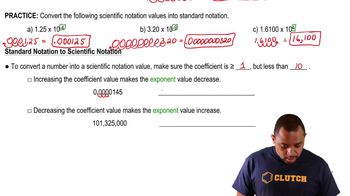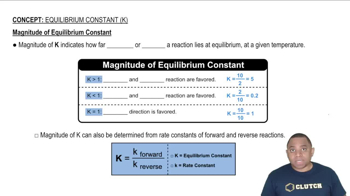Here are the essential concepts you must grasp in order to answer the question correctly.
Scientific Notation
Scientific notation is a way of expressing numbers that are too large or too small to be conveniently written in decimal form. It is represented as a product of a number between 1 and 10 and a power of ten. For example, 5.63 * 10^6 means 5.63 multiplied by 1,000,000. Understanding this notation is essential for comparing large quantities.
Recommended video:
Standard Notation to Scientific Notation
Unit Conversion
Unit conversion involves changing a quantity expressed in one unit to another unit. In this question, we need to convert kilometers to centimeters to make a direct comparison. Since 1 kilometer equals 100,000 centimeters, converting 6.02 * 10^1 km to centimeters is crucial for determining which quantity is larger.
Recommended video:
Magnitude Comparison
Magnitude comparison refers to the process of determining which of two quantities is larger. This involves evaluating the numerical values and their respective units after any necessary conversions. By comparing the magnitudes of the two quantities in the same unit, we can accurately identify which one is larger.
Recommended video:
Magnitude of Equilibrium Constant
 Verified step by step guidance
Verified step by step guidance


